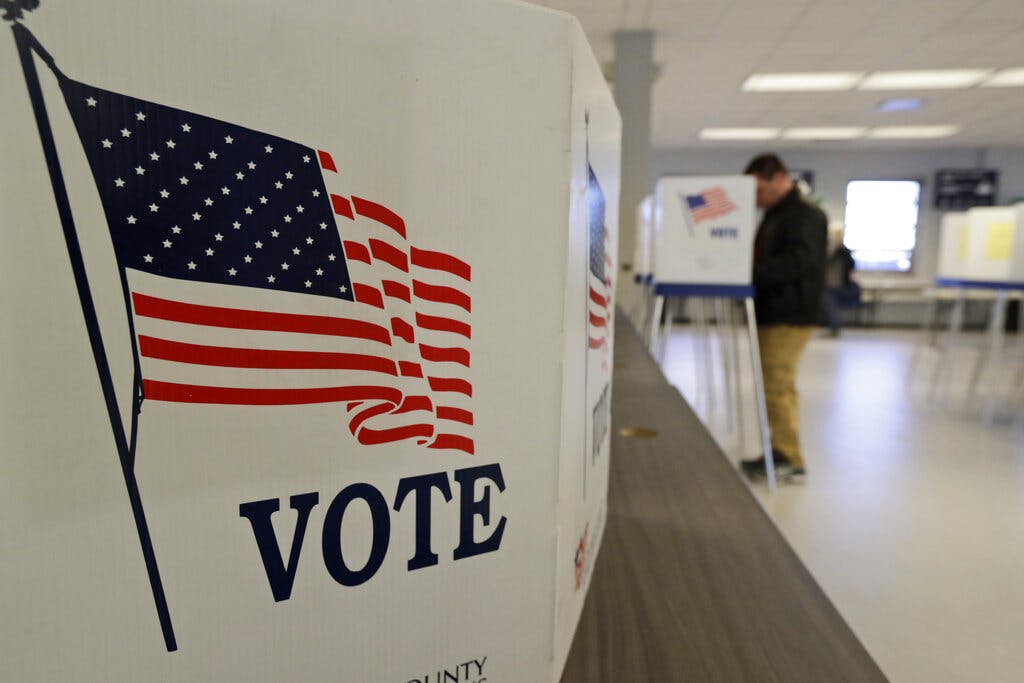Appellate Division Tosses New York’s District Maps in Partial Win for Both Parties
The state senate and assembly maps will remain in place while the U.S. House maps have been discarded for now.

New York’s top court is the next stop for the state’s redistricting struggle, following an appeals court decision that determined the Empire State’s new congressional district maps are unconstitutionally gerrymandered.
The decision late Thursday may be seen as a partial win for both Democrats and Republicans.
The court rebuked assertions by the Republicans who brought the suit that the state senate and assembly maps were drawn to favor Democrats, even while agreeing with Republican claims that the new U.S. House districts were unfair as constituted.
The state senate and assembly maps, which were previously thrown out by a lower court judge in Steuben County, Patrick McAllister, will remain in place while the U.S. House maps have been discarded for now.
The new House maps were found to be in violation of a 2014 constitutional amendment that explicitly outlawed the drawing of district maps to favor specific political parties or candidates.
The appellate court decision reads: “we are satisfied that petitioners established beyond a reasonable doubt that the legislature acted with partisan intent in violation of article III.”
However, the court reversed a decision of Judge McAllister by finding that the legislature’s intervention into the map-drawing process, which the lower court judge previously deemed unconstitutional, was a valid maneuver.
“It’s disappointing that the majority excused the Legislature’s failure to follow the redistricting provisions in the state Constitution,” an Empire Center analyst, Cam Macdonald, wrote. “The Legislature knew in advance that what it has done would be unconstitutional.”
“That’s why it asked the voters to pass an amendment last fall that was rejected,” Mr. Macdonald continued. “Instead, the Legislature chose to ignore the Constitution and draw its own maps.”
According to the 2014 redistricting amendment, the responsibility for drawing of voting district maps rests with the Independent Redistricting Commission in New York State. This year, the Democratically controlled legislature intervened and drew the maps that are now the subject of litigation.
The decision reads: “Having determined that the procedure used to enact the 2022 congressional map is valid but that the map itself is unconstitutional, we conclude that the legislature ‘shall have a full and reasonable opportunity to correct the law’s legal infirmities.’”
The appellate decision came in a three-to-two majority. The dissenting opinion called the “expert evidence” offered by the Republicans who filed suit “insufficient to establish unconstitutional partisan intent beyond a reasonable doubt.”
The Republicans’ argument rests in no small part on a “simulation analysis” provided by RealClearPolitics’s senior elections analyst, Sean Trende. Simulation analysis is a method of using computer-generated models to analyze possible biases in maps.
Following Thursday’s ruling, which is being appealed by both Republicans and Democrats, the final decision on the validity of the voting maps will fall to the seven judges on the New York State Court of Appeals. If they declare the maps to be unconstitutional, then the legislature would have until April 30 to redraw them.
Arguments will begin in the Court of Appeals on Tuesday and a decision is expected soon afterward, as the court has already agreed to hear the case on an expedited schedule.
“We always knew this case would end at the Court of Appeals and look forward to being heard on our appeal to uphold the Congressional map as well,” a Democratic Party spokesman, Mike Murphy, said.
Republicans remain confident that the Court of Appeals will uphold the lower court’s decisions.
“We are pleased that the Appellate Division confirmed what all New Yorkers know: The Congressional map that the Democrats in the Legislature adopted is an egregious, unconstitutional gerrymander,” a former congressman who is serving as spokesman for the Republicans, John Faso, said in a statement.
Judge McAllister had previously ordered the legislature to redraw the district maps. He ruled that if they failed to submit maps with bipartisan support, the task would fall to a court-appointed special master — a postdoctoral fellow at Carnegie Mellon’s Institute of Politics and Strategy, Jonathan Cervas.
Mr. Cervas declined to comment on specifics relating to the state’s enacted or proposed maps, telling the Sun he was “thrilled to assist the New York courts in delivering constitutional maps that will provide equal representation for all New York residents for the next decade.”
Mr. Cervas, a nonpartisan consultant, has previously worked on the Pennsylvania Legislative Reapportionment Commission and served as an assistant special master in Virginia state legislative redistricting in 2019, following a lengthy court battle.
The decision in the Court of Appeals could swing power in the U.S. House of Representatives this fall. Democrats now hold the majority by 11 seats, meaning a six-seat swing could change the majority party.
The maps currently under litigation have the potential to cut New York’s Republican delegation in half.
The proposed maps would create 20 Democratic-leaning districts, two competitive districts, and four Republican-leaning districts. Currently, New York has 17 Democratic-leaning districts, three competitive districts, and seven Republican-leaning districts.
One of New York’s current 27 congressional seats was lost in the decennial reapportionment.

